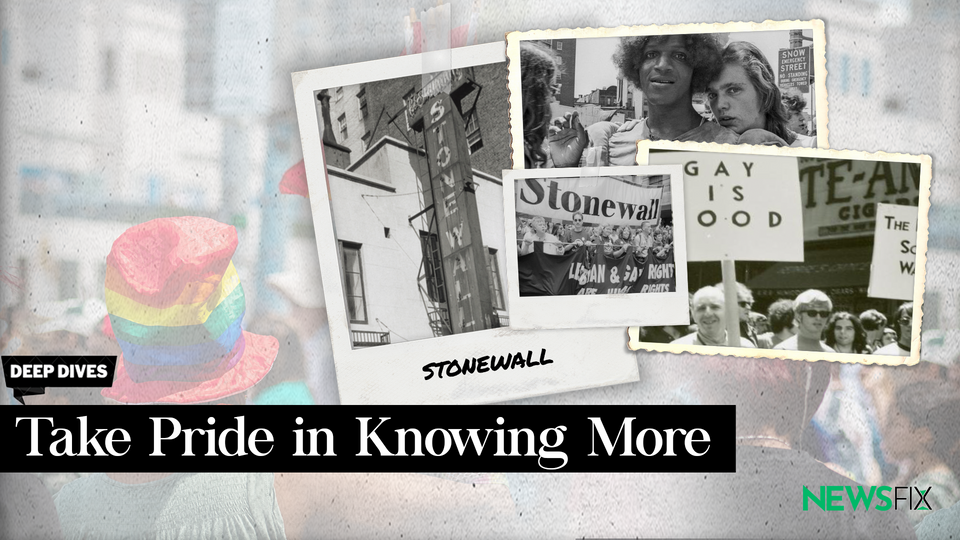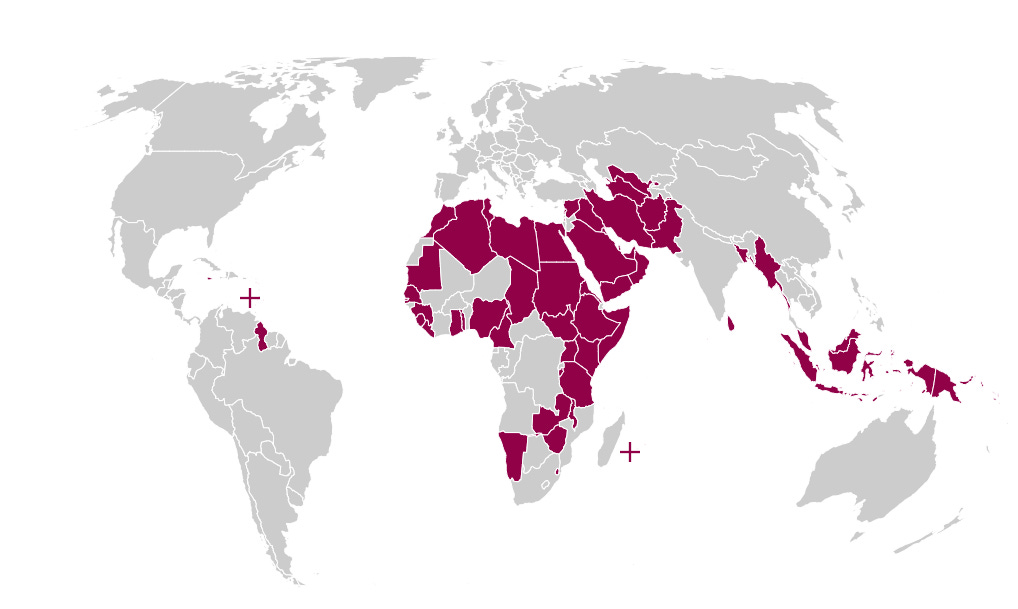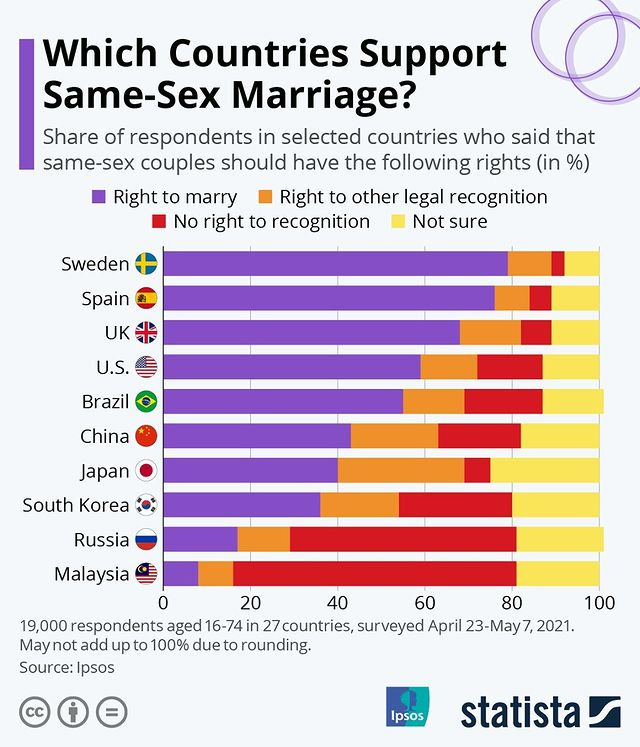🏳️🌈 Take Pride in Knowing More

Hi all,
As Pride month comes to an end, many have asked where it all began.
This piece explores the history of Pride - from the Stonewall riots, the first pride marches, and pride and politics.
Also included are some stark statistics highlighting the importance of knowing more.
Until tomorrow,
Hilary and Layla
*This piece was originally published on June 30, 2021
BEFORE WE START…
What does LGBTQ+ stand for? Lesbian, gay, bisexual, transgender, questioning/queer, or any other form of identity that is not straight or cis-gender.
What does cis-gender mean? It relates to people who identify with their birth sex.
HOW PRIDE MONTH BEGAN
Pride month started as a march in 1970 to honour the Stonewall riots from the year before. It then grew to encompass a whole month of celebrations, teachings, and protesting.
Celebrations today consist of pride parades, workshops, concerts, and more.
Memorials are also held for members of the LGBTQ+ community lost to hate crimes or HIV/AIDS.
Worth noting: AIDS used to be referred to as GRID - ‘gay related immunodeficiency disease’. In a 1982 New York Times article - just months into the epidemic - the disease was also described as a “new homosexual disorder”.
THE STONEWALL RIOTS
As mentioned above, Pride month began as a single day event to honour the Stonewall riots in 1969 - an event widely considered as a “watershed moment” in the gay rights movement.
Quick rewind - America in the 1950s and 1960s
For much of this time, homosexuality was outlawed in every US state. Illinois became the first American state to decriminalise it in 1962.
Medical authorities would dub homosexuality “a mental defect” or a form of psychopathy, and psychiatrists would try to talk people into being heterosexual.
If that didn’t work, the “patients” were often subjected to aversive conditioning and sometimes even more extreme procedures such as sterilisation, castration, and lobotomies to “cure” them from their homosexuality.
During this same time, gays bars and clubs were seen as a safe haven for those in the LGBTQ+ community.
The Stonewall Inn
The Stonewall Inn was one of the most established gay bars in New York City.
Mafia connections: Ever heard of Tony Lauria? As in, ‘Fat Tony’? He was a young member of the Genovese crime family, and the owner of the Stonewall Inn.
In fact, the vast majority of gay bars were owned by mafia crime families, in what was described as “an unlikely but mutually beneficial association”.
How so? Well, the mafia bosses bribed police officers to essentially look the other way. At the same time, customers were overcharged, while many wealthy customers were blackmailed with threats of being ‘outed’ to their families.
Despite the mafia bribes to police, the Stonewall Inn was repeatedly raided, with customers considered to not be wearing “gender appropriate clothing” arrested.
Okay, so what happened in 1969?
On June 28, 1969, police once again raided the Stonewall Inn, arresting bartenders and customers. This time, though, people had had enough.
People flooded Christopher Street - the street right outside the inn- and protested the violence and injustice being directed at any non-straight, non-cis-gender person.
Over the course of six days, protestors demanded the establishment of areas where homosexuality was legal and where LGBTQ+ people could be open about their sexuality.
*Below is a set of fascinating accounts of what actually happened with people who were there, and LGBTQ+ historians.
THE FIRST PRIDE MARCH
On June 28 1970, the world’s first Pride March took place in New York City to commemorate the riots the year before.
The event was organised by the newly founded Gay Liberation Front who named it “Christopher Street Liberation Day March”.
According to the Library of Congress, somewhere between three and five thousand people showed up.
*Here is a link to footage of the 1970 Pride March if you are interested.
Comparison to Pride Marches in recent years: New York City consistently holds one of the world’s largest Pride March parades. In 2019, more than two million people are said to have attended.
*Below is a really helpful graphic by The Guardian, highlighting Gay Pride start dates around the world.

WHAT ABOUT THE PRIDE SYMBOL?
The first openly gay elected official in California, Harvey Milk, asked his designer friend Gilbert Baker to create a symbol to take to San Francisco’s Pride March in 1978.
In the first version of it, Baker’s rainbow flag had eight colours - rather than the current 6 - each with its own meaning:

Before Milk was able to see it displayed in full, he was murdered at the San Francisco City Hall by a disgruntled former colleague. After Milk’s murder, the flag also stood as a commemorative symbol, but the final version cut two colours - pink and turquoise - for practical reasons.
For example, the pink was cut simply because it was “a pigment that proved difficult to source”.
PRIDE AND POLITICS IN THE US
Bill Clinton
In 1999, Bill Clinton became the first US president to officially recognise Pride Month.
Worth noting: While the above is true, it is also important to note Clinton’s legacy as president between 1992 and 2000 also includes the signing of the 1996 Defense of Marriage Act. This legislation - signed during an election year - essentially ensured same-sex marriages “would be second-class marriages even in states that permitted them”.
“Faced with the popularity of Defense Of Marriage Act and its overwhelming support in Congress, Clinton signed the law and ran radio ads touting his support of it in Southern states. He signed it in the middle of the night, with no cameras present and without a signing ceremony, as if he knew at the time that he would not want it to be part of his legacy, though he did want it to be part of his reelection campaign.” - Vox analysis
Barack Obama
In 2009, President Obama - who was initially against same-sex marriage at the beginning of his tenure, but became more of an LGBTQ+ advocate as his political career advanced - extended its title to be more inclusive, changing it to “Lesbian, Gay, Bisexual and Transgender Pride Month.”
Obama also made Stonewall Inn a national monument on June 24, 2016, making it the first US monument to celebrate gay history.
Joe Biden
President Biden - a devout Catholic - was against same-sex marriage during his first term as Obama’s vice president. In fact, back in 1992 Biden voted to block an amendment that would allow same-sex partners to cohabit.
In 2012, he expressed a change in stance and said much like the country, his views were “evolving”.
Donald Trump
Prior to his election in 2016, Donald Trump became the first Republican to ever mention the LGBTQ+ community in an acceptance speech while accepting the presidential nominee. The speech was made weeks after an Islamic terrorist went on a killing rampage at a gay club in Florida, called Pulse nightclub. Trump - who greatly divided opinion on both immigration and Islam - said he would do “everything in my power” to protect the LGBTQ+ community “from the violence and oppression of a hateful foreign ideology”.
*Below is a helpful clip, showing Biden’s evolved stance on this over the years.
INTERNATIONAL RECOGNITION
The LGBTQ+ movement exists in more than 160 countries. Although more than 70 countries around the world still enforce anti-gay legislation, homosexuality has been decriminalised in more than 120 countries.
*Below is a map by Human Dignity Trust of which countries criminalise LGBTQ+ people.
Worth noting: Among the 22 Arab League members, Saudi Arabia, Yemen and Sudan impose the death penalty for gay sex. Nigeria, Somalia and Iran also have capital punishment, while Mauritania and Brunei have moratoriums on death sentences for same-sex relations.

In terms of same-sex marriage, it is legal in at least 29 countries around the world. The first to legislate for it was the Netherlands in 2001.
Costa Rica is the latest country to implement the societal shift, becoming the first Central American nation to allow it last year.

A post shared by @statista
IRELAND'S RECORDS
While annual picnics were held in Dublin in recognition of Stonewall during the 1970s, Ireland’s first large scale Pride March took place in 1983.
The protest march was not just about Stonewall, but in response to release of five teenagers who brutally murdered a gay man, Declan Flynn, in 1982. The killers admitted they were part of a “team to get rid of queers” from a Dublin park.
In a chilling indictment of the homophobia in Ireland during the height of the Catholic Church’s power, Justice Seán Gannon - who presided over the case - said “it could never have been murder”.
Justice Gannon gave the teenagers - who pleaded guilty to manslaughter - suspended sentences, adding while what happened to Declan Flynn was appalling, the perpetrators had “come from good homes”.
Worth noting: Ireland decriminalised homosexuality in 1993. In an indication of just how much the country changed during the separation of church and state, in 2015 it became the first country in the world to legalise same-sex marriage via referendum.
*Here is a really helpful look at the History of Pride in Ireland.
OPENLY GAY POLITICAL LEADERS
There are currently only two openly gay and lesbian leaders in the world - the Prime Minister of Serbia, Ana Brnabic, and Prime Minister of Luxembourg, Xavier Bettel.
The photo below of both couples went viral in 2019.
This normal looking photo is an historic first: the gay prime minister of Luxembourg and his husband meeting with the lesbian prime minister of Serbia and her girlfriend.
— Benjamin Butterworth (@benjaminbutter) September 10, 2019
Progress often seems far too slow. But it’s real, and it’s worth celebrating 🌈 pic.twitter.com/yIfv5Kyt0d
There have been three other openly gay leaders in the past;
- Irish Taoiseach, Leo Varadkar
- Icelandic Prime Minister, Jóhanna Sigurðardóttir
- Belgian Prime Minister, Elio Di Rupo
STARK STATISTICS
A 2018 report by Stonewall.org found 40% of trans people and one in five LGBTQ+ people have experienced a hate crime due to their gender identity or sexual orientation.
In Ireland, a third of the LGBTQ+ community has been threatened with physical violence due to their sexual orientation or gender identity, according to The Irish Times.
According to the Child Mind Institute, gay teens are four times more likely than their straight counterparts to attempt suicide.
In a report published by the National Center for Transgender Equality in the US, 41% of participants attempted suicide due to discrimination or violence of some sort.
In the UK, a 2017 study by Stonewall found that over the previous year, half of LGBTQ+ people had experienced depression, one in eight peopled aged 18-24 had attempted suicide, and almost half of transgender people had thought about committing suicide.
In Ireland, a report by LGBTIreland published in 2016 found that 21.4% of those from the LGBTQ+ community had attempted suicide, and another found that 70% of teens aged 14-18 had seriously thought of committing suicide.
